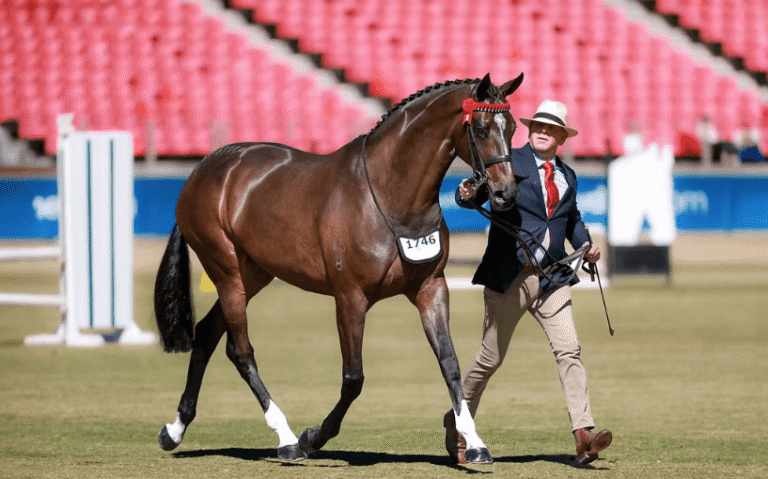In horse racing, the dream of every breeder, trainer, and owner is to find that one special horse—the one with the talent, heart, and durability to become a champion. While no formula can guarantee success, certain traits, bloodlines, and behavioral signs often separate future legends from average runners. Learning to recognize these indicators can help enthusiasts, investors, and racing professionals identify horses with the potential to dominate the track.
This article explores the key factors to consider when spotting a potential champion horse.
1. Pedigree and Bloodlines
One of the most important indicators of a horse’s potential is its breeding background. Champions often come from families of winners.
- Sire (father): Successful stallions often pass on speed, stamina, or toughness.
- Dam (mother): Mares contribute not only genetics but also temperament and durability.
- Proven Lineage: Horses bred from lines with Kentucky Derby, Belmont Stakes, or Prix de l’Arc de Triomphe winners are highly valued.
Example: Secretariat’s bloodline carried traits of stamina and power, which helped him dominate the Triple Crown.
👉 While pedigree is not everything, strong bloodlines provide a foundation for success.
2. Conformation (Physical Structure)
A horse’s body shape and structure, known as conformation, can reveal much about its racing potential. Experts look for:
- Balance: Proportional body parts that move efficiently.
- Strong Shoulders: Allow for a longer stride and smoother gallop.
- Powerful Hindquarters: Provide the driving force for speed and acceleration.
- Good Hooves and Legs: Straight, sturdy limbs that minimize risk of injury.
Poor conformation can lead to inefficiency or even breakdowns, while well-built horses often perform consistently at higher levels.
See also: The Best Horse Racing Events You Should Watch
3. Athleticism and Movement
Watching a horse move can provide valuable clues:
- Stride Length: Longer, efficient strides cover more ground with less effort.
- Flexibility: Smooth, flowing motion without stiffness or awkwardness.
- Recovery Rate: Horses that recover quickly after workouts often have superior fitness and stamina.
Many trainers say that you can “spot an athlete” just by watching how a young horse walks or gallops naturally.
4. Temperament and Mental Strength
A champion horse needs not just physical talent but also mental resilience. Key traits include:
- Focus: Horses that stay calm in the paddock and gate often run better under pressure.
- Competitiveness: Some horses have a natural drive to get ahead of rivals.
- Adaptability: The ability to handle new environments, crowds, and changing track conditions.
Example: Zenyatta, one of the most beloved mares in racing history, was known for her calm demeanor and strong finishing drive, making her nearly unbeatable.
5. Early Training and Workouts
Potential champions often show promise early in training. Trainers look for:
- Response to Training: Quick learners who adapt well to routines.
- Speed in Workouts: Horses that clock impressive times in breezes and gallops.
- Consistency: Horses that perform steadily in training, not just in flashes.
While some horses mature later, early signs of talent can indicate future greatness.
6. Health and Durability
A horse may have speed, but without soundness and durability, it won’t last on the track. Key indicators include:
- Clean Medical History: No recurring injuries or joint problems.
- Strong Bones and Muscles: Resistant to the wear and tear of racing.
- Recovery Ability: Horses that bounce back quickly after races or workouts.
Durability is often what separates short-lived stars from long-term champions.
7. Performance in Early Races
Once a horse begins racing, its early performances provide valuable insight:
- Consistency: Regular top finishes against quality fields.
- Finishing Power: Ability to accelerate late in races, a hallmark of champions.
- Adaptability: Performing well across different tracks, distances, and surfaces.
Some horses may not win right away but show flashes of brilliance that suggest greater potential as they mature.
8. Expert Eyes and Intuition
Ultimately, spotting a champion involves experience and intuition. Trainers, breeders, and bloodstock agents often rely on years of observation to identify “something special” in a horse. That spark might be in the way it carries itself, its energy, or how it digs deep when challenged.
As legendary trainer D. Wayne Lukas once said: “You can teach conditioning, you can plan strategy, but you can’t give a horse the heart of a champion—it either has it or it doesn’t.”
Conclusion
Spotting a potential champion horse is part science, part art, and part instinct. From pedigree and conformation to temperament, health, and performance, many factors come together to shape a great racehorse. While no formula guarantees success, understanding these indicators can help enthusiasts and professionals alike recognize when a horse has the tools to become extraordinary.
Champions are rare, but when they appear, they redefine what is possible on the racetrack—and it all starts with spotting the signs early.
